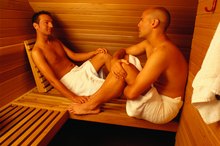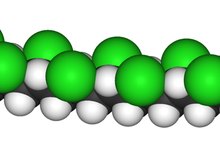What does fact checked mean?
At Healthfully, we strive to deliver objective content that is accurate and up-to-date. Our team periodically reviews articles in order to ensure content quality. The sources cited below consist of evidence from peer-reviewed journals, prominent medical organizations, academic associations, and government data.
- American Heart Association: Hot tub and sauna use with high blood pressure
- American Journal of Medicine: Benefits and risks of sauna bathing
- American Journal of Medicine: Benefits and risks of sauna bathing
The information contained on this site is for informational purposes only, and should not be used as a substitute for the advice of a professional health care provider. Please check with the appropriate physician regarding health questions and concerns. Although we strive to deliver accurate and up-to-date information, no guarantee to that effect is made.
What Are the Risks of Using a Sauna?
Saunas play an important role in Finland's history, where they were first used thousands of years ago. In his book "Sweat," Mikkel Aaland traces the use of saunas or sweat baths to Finns' nomadic days around the first millennium. Saunas--wet, dry and infrared--are considered safe when use in moderation, but the risks presented by misuse or preexisting health conditions could make a dangerous destination.
If you are experiencing serious medical symptoms, seek emergency treatment immediately.
Overheating
In Edward Press' article for the American Journal of Public Health, he observed that the temperature inside of a sauna can raise the temperature of the body to a dangerous level 2. His paper saw Finnish sauna temperatures typically range between 176 and 194 degrees Fahrenheit. In one study cited in his paper, women in a 178-degree Finnish sauna reported discomfort related to overheating, including dizziness, arrhythmia, and stomach pain, before the body temperature reached reached the 102.02 degrees--considered the fail-safe level by the study. Underwriters Laboratories, the internationally-recognized authority on product safety, warns users not to exceed 30 minutes in one sitting.
- In Edward Press' article for the American Journal of Public Health, he observed that the temperature inside of a sauna can raise the temperature of the body to a dangerous level 2.
- In one study cited in his paper, women in a 178-degree Finnish sauna reported discomfort related to overheating, including dizziness, arrhythmia, and stomach pain, before the body temperature reached reached the 102.02 degrees--considered the fail-safe level by the study.
Under the Influence
Do Infrared Saunas Work to Lose Weight?
Learn More
Using drugs or alcohol often decreases an individual's judgment. The National Institute on Drug Abuse reports that stimulants like cocaine constrict blood vessels, causing the heart beat faster and blood pressure to increase, which could be potentially fatal on its own. Cocaine users who enter saunas exacerbate the risk by introducing the body to an environment which heats the body and has its own impact on the heart.
Alcohol presents its own problems. A 2001 paper by Drs. M.L. Hannuksela and S. Ellahham published in the American Journal of Medicine on the benefits and risks of saunas shows that drinking in the sauna increases the likelihood of hyoptension, arrhythmia and death 3. In addition, there is no scientific proof that a person can "sweat out" his or her hangover in a sauna.
- Using drugs or alcohol often decreases an individual's judgment.
- The National Institute on Drug Abuse reports that stimulants like cocaine constrict blood vessels, causing the heart beat faster and blood pressure to increase, which could be potentially fatal on its own.
Cardiac Conditions
The American Heart Association reports that heat from saunas cause blood vessels to dilate, allowing blood to move with less effort 1. For those with hypotension or a condition where mild to moderate exercise is recommended, sauna use may be effective. However, those who have recently had a heart attack, unstable angina conditions or severe aortic stenosis should avoid saunas. Drs. Hannuksela and Ellahham found that those conditions are contraindicative to sauna use.
- The American Heart Association reports that heat from saunas cause blood vessels to dilate, allowing blood to move with less effort 1.
- However, those who have recently had a heart attack, unstable angina conditions or severe aortic stenosis should avoid saunas.
Related Articles
References
- American Heart Association: Hot tub and sauna use with high blood pressure
- American Journal of Public Health: The Health Hazards of Saunas and Spas and How to Minimize Them
- American Journal of Medicine: Benefits and risks of sauna bathing
- Beever, R. (2010). Do Far-infrared Saunas Have Cardiovascular Benefits in People with Type 2 Diabetes? Canadian Journal of Diabetes, 34(2), 113–118. doi:10.1016/s1499-2671(10)42007-9
- Beever R. (2009). Far-infrared saunas for treatment of cardiovascular risk factors: summary of published evidence. Canadian family physician Medecin de famille canadien, 55(7), 691–696. PMID: 19602651
- Crinnion WJ. (2011). Sauna as a valuable clinical tool for cardiovascular, autoimmune, toxicant-induced and other chronic health problems. Environmental Medicine.
- Dean, W. (1981). Effect of sweating. JAMA: The Journal of the American Medical Association, 246(6), 623–623
- Imamura, M., Biro, S., & Kihara, T. (2002). Repeated thermal therapy improves impaired vascular endothelial function in patients with coronary risk factors. ACC Current Journal Review, 11(2), 32. doi:10.1016/s1062-1458(02)00539-1
- Joy Hussain and Marc Cohen, “Clinical Effects of Regular Dry Sauna Bathing: A Systematic Review,” Evidence-Based Complementary and Alternative Medicine, vol. 2018, Article ID 1857413, 30 pages, 2018. https://doi.org/10.1155/2018/1857413
- Kunutsor, S. K., Laukkanen, T., & Laukkanen, J. A. (2017). Sauna bathing reduces the risk of respiratory diseases: a long-term prospective cohort study. European Journal of Epidemiology, 32(12), 1107–1111. doi:10.1007/s10654-017-0311-6
- Laukkanen, J. A., Laukkanen, T., & Kunutsor, S. K. (2018). Cardiovascular and Other Health Benefits of Sauna Bathing: A Review of the Evidence. Mayo Clinic Proceedings, 93(8), 1111–1121. doi:10.1016/j.mayocp.2018.04.008
- Laukkanen, T., Khan, H., Zaccardi, F., & Laukkanen, J. A. (2015). Association Between Sauna Bathing and Fatal Cardiovascular and All-Cause Mortality Events. JAMA Internal Medicine, 175(4), 542. doi:10.1001/jamainternmed.2014.8187
- Margaret E. Sears, Kathleen J. Kerr, and Riina I. Bray, “Arsenic, Cadmium, Lead, and Mercury in Sweat: A Systematic Review,” Journal of Environmental and Public Health, vol. 2012, Article ID 184745, 10 pages, 2012. https://doi.org/10.1155/2012/184745.
- Mero, A., Tornberg, J., Mäntykoski, M., & Puurtinen, R. (2015). Effects of far-infrared sauna bathing on recovery from strength and endurance training sessions in men. SpringerPlus, 4, 321. doi:10.1186/s40064-015-1093-5
- Oosterveld, F. G. J., Rasker, J. J., Floors, M., Landkroon, R., van Rennes, B., Zwijnenberg, J., … Koel, G. J. (2008). Infrared sauna in patients with rheumatoid arthritis and ankylosing spondylitis. Clinical Rheumatology, 28(1), 29–34. doi:10.1007/s10067-008-0977-y
- Shui, S., Wang, X., Chiang, J. Y., & Zheng, L. (2015). Far-infrared therapy for cardiovascular, autoimmune, and other chronic health problems: A systematic review. Experimental Biology and Medicine, 240(10), 1257–1265. doi:10.1177/1535370215573391
- Soejima, Y., Munemoto, T., Masuda, A., Uwatoko, Y., Miyata, M., & Tei, C. (2015). Effects of Waon Therapy on Chronic Fatigue Syndrome: A Pilot Study. Internal Medicine, 54(3), 333–338. doi:10.2169/internalmedicine.54.3042
- Stephen J. Genuis, Sanjay Beesoon, Detlef Birkholz, and Rebecca A. Lobo, “Human Excretion of Bisphenol A: Blood, Urine, and Sweat (BUS) Study,” Journal of Environmental and Public Health, vol. 2012, Article ID 185731, 10 pages, 2012. https://doi.org/10.1155/2012/185731.
Writer Bio
Jared Paventi is the communications director for a disease-related nonprofit in the Northeast. He holds a master's degree from Syracuse University's S.I. Newhouse School of Public Communication and a bachelor's degree from St. Bonaventure University. He also writes a food appreciation blog: Al Dente.









